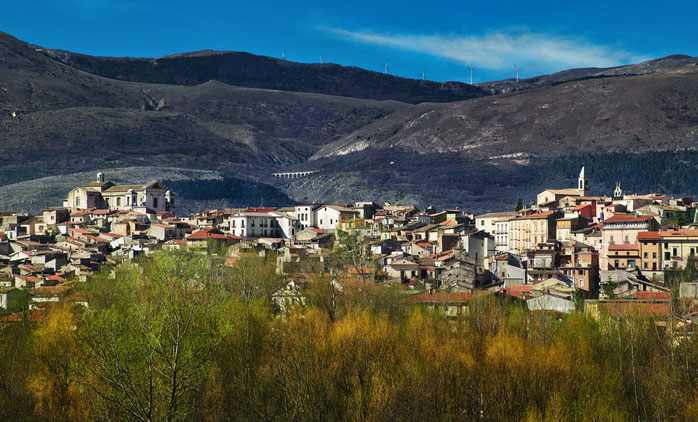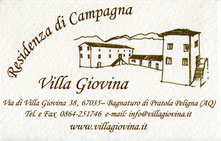Pratola Peligna

“'Mocca a tì, 'mocca a mì, 'mocca allu can' de la Barì” ( in your mouth, in my mouth, in the mouth of the Abbey’s dog), with this rhyme mothers were feeding their lazy children. I remember them with the bowl of soup in a hand sitting on the steps at the entrance of the house in the alley. The dog represented the abbot of the Celestine Abbey to which Pratola was submissive in a ratio of barony since 1294 when Carlo II D’Angiò gave to Pietro da Morrone, after the his coronation as Pope with the name of Celestine V, the territory of Castrum Pratulae with all the appurtenances and churches. For this reason, the history of Pratola, who received the title of " Peligna " by royal decree in 1863, is closely linked to that of monastic congregation of Celestine, until 1807 when Napoleon abolished feudalism and most of the religious orders.

Pratola Peligna stands on a hill bordered by the River Sagittarius to the east and to the west by the river Rio, in the center of the Peligna Valley in the province of L'Aquila. The culmination of the town is the most important monument : the Sanctuary of the Madonna della Libera. The majestic church originates from a sixteenth-century chapel built by Pratolani around a fresco depicting the Madonna who had freed them from a terrible plague. The Sanctuary, in the imposing dimensions of how we see it today, was built in the mid nineteenth century to contain the thousands of pilgrims who came attracted by the miracles that Our Lady lavished. The church houses the miraculous fresco and also the processional statue that was built by the Celestine Fathers of Sulmona’s Abbey, this regal representation of Mary, dressed in a purple and blue mantle embroidered with gold thread, is carried in procession through the streets of the town covered with jewels and gold items offered in thanksgiving for miracles. The Madonna della Libera is celebrated in the first week of May with a large influx of pilgrims, among them are distinguished devotees members of Compagnia di Gioia that since time immemorial have made the pilgrimage on foot along the path all the way from Gioia dei Marsi which is about far away.
Pratola , perhaps because of the submission to the Abbot of the Morrone’s Abbey (Morrone is the mountain under which the Abbey is located), it has not important medieval remains except in spontaneous architecture that emerge in the oldest streets. It is worth visiting the old town called "Dentro la Terra” ( inside the Earth), which someone trace back to a fortified center. Here are the churches of St. Peter Celestine and the Holy Trinity and the Palazzo De Petris, to access it go past the Arc D' Angiò thatat his top has the Celestine symbol: a cross with a coiled snake. Particularly interesting are the two adjoining sixteenth century chapels ( National Monument ): Madonna della Pietà (Our Lady of Mercy) also known as Cappella delle Sette Marie (Chapel of the Seven Mary) with a Terracotta Compianto (Lamentation) of the Neapolitan school; Madonna delle Grazie (Our Lady of Graces) with frescoes of the Umbrian school.









































